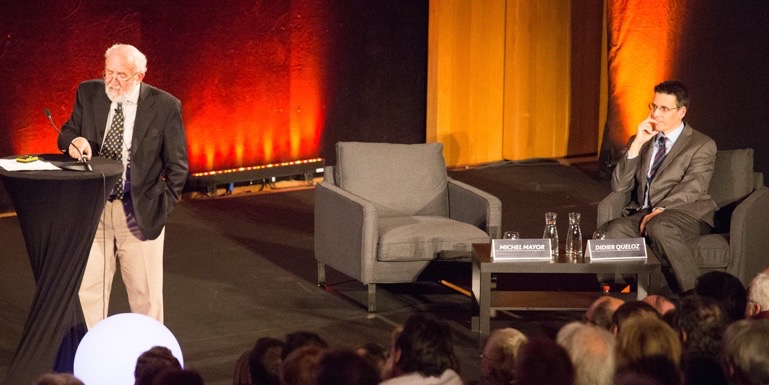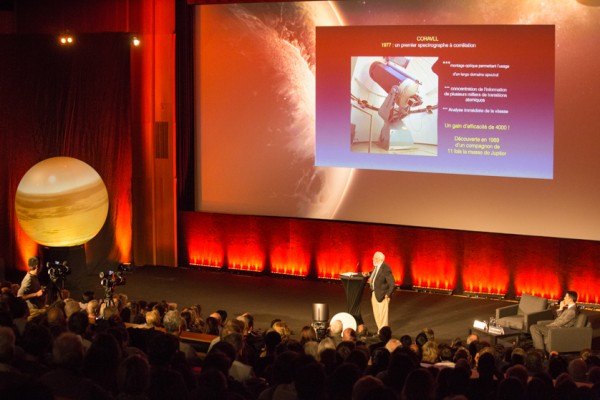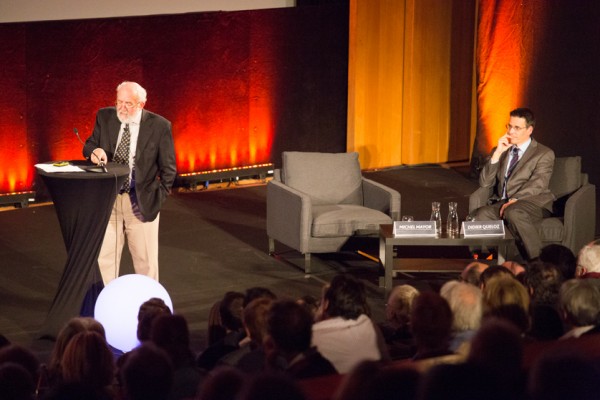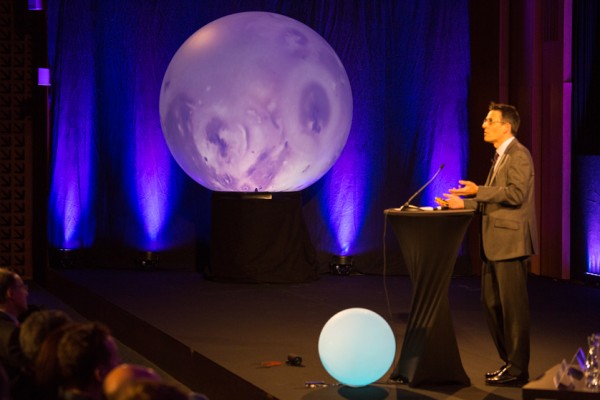Inside view of 51pegb discovery

“Sorry, the room is full, you can go to the other auditorium where the conference is broadcast on a giant screen.” Security agents continually repeated this to the despair of a large audience on 3rd November 2015 at the University of Geneva. It must be said that the cast announced to the Geneva public was enough to attract a large crowd: Michel Mayor and Didier Queloz were giving a two-voices conference about the discovery of the first exoplanet 51pegb. Twenty years ago, on 6th October 1995, the world learned that planets existed around stars other than the sun. This discovery, however, was not received without bouncing, hesitation, doubt, difficulty or joy, and will mostly remain a human adventure.
It is precisely this kind of adventure that the conference organizers wanted to show the public. “Don’t focus your talk on exoplanets, but tell us rather about your experiences, how it all started and about its consequences” they asked the two speakers. Although they had never publicly addressed the issue, Michel Mayor and Didier Queloz played the game so well that their conference lasted more than two hours and ended with a genuine standing ovation from the audience.
The chancellor of the University opened the conference explaining to some 800 attendees the importance of the 51pegb discovery. Indeed, without it the reputation of the astronomy department of the University would not be where it is now, and NCCR PlanetS may not have been possible. A discovery, he reminded, that placed Switzerland in a leading position and opened the doors of space to the country thanks to the choice of the CHEOPS Swiss satellite by the European Space Agency.
Then it was the turn of Georges Meynet, Professor of astronomy and colleague of Michel Mayor and Didier Queloz to speak and specify what contexts lead his colleagues to the discovery.
If the opening of the conference was tinged with classicism, what followed turned more into a show. After a brief video was projected on a giant screen evoking the trip to Mars, Michel Mayor first spoke about the ELODIE adventure, the spectrograph at the origin of the discovery of 51pegb. ELODIE was actually the big sister of CORAVEL, a spectrograph designed in the seventies by the Geneva Observatory and the “Observatoire de Haute Provence” under the direction of Michel Mayor and André Baranne. CORAVEL could measure radial velocities with a precision 4’000 times greater than what was being done at the time. “When you have this kind of device in hand it is easy to make discoveries” commented the astronomer with his usual modesty. This instrument allowed Michel Mayor to detect a body mass equivalent to about ten Jupiters, “We realized that the detection of planets was within our reach, and we embarked on the construction of ELODIE”.
Michel Mayor then moved away to sit next to his colleague Didier Queloz, leaving a slight suspense in the audience. The room darkened and a short film showed a huge ball of 2.5 meters in diameter, enabling the public to pause for a moment. Didier Queloz then stood up and enthusiastically spoke about the discovery of 51pegb. After another brief pause, Michel Mayor described the media onslaught before allowing Didier Queloz to conclude the conference by outlining future prospects, not without addressing the possibility of extra-terrestrial life. The public was conquered and lived this event as a child listening to a tale from the Thousand and One Nights.
Categories: External Newsletter



